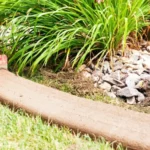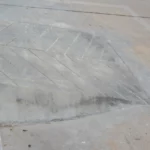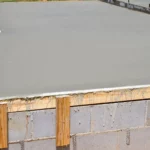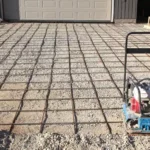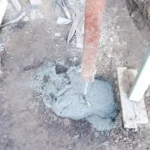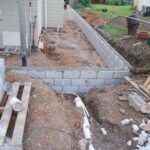
Concrete waste is a hassle no one wants to deal with, whether you’re pouring a shed slab, footpath, driveway, or footings for a new project. Leftover wet concrete doesn’t just vanish – it sticks around, costing you time, money, and effort to dispose of properly. Whether you’re a weekend DIYer or a tradie on a job site, managing leftover concrete is one of those problems that sneaks up on you.
The good news? With a little planning, some practical tips, and a helping hand from Concrete Taxi, you can significantly reduce waste and make your next project smoother and stress-free.
Why Avoiding Concrete Waste Matters
Concrete waste isn’t just an eyesore; it’s costly, time-consuming, and bad for the environment. Leftover concrete, whether wet or dry, takes up space in landfill sites or requires special disposal methods, adding unnecessary costs to your project.
Improper disposal of wet concrete, or concrete slurry, can have even more serious consequences. Australian council regulations and waste management companies discourage dumping wet concrete in drains or on the ground because its chemicals can harm waterways, plants, and soil. Some councils impose hefty fines if you don’t follow the rules.
For the environment and your budget, avoiding concrete waste from the start is the smart way to go.
The Challenges of Managing Leftover Wet Concrete
We’ve all been there – trying to figure out how much concrete to order can feel like solving a riddle. Order too much, and you’re left with a pile of wet concrete that needs urgent attention. Order too little, and you’re scrambling to organise another batch, delaying your project.
So, what do you do when you’re left with leftover concrete at the end of a job?
What to Do With Leftover Wet Concrete
If you’ve over-ordered concrete, you have a few options:
1. Repurpose It for Another Project
Think ahead – is there another small project you could use the extra concrete for? Leftover concrete is perfect for things like garden paths, stepping stones, or even filling in cracks in your driveway. Keep a bucket or mould handy for quick reuse.
2. Dry It Out Before Disposal
Wet concrete is tricky to dispose of, but once it hardens, it becomes much easier to handle. Most waste management companies or landfill sites will accept small amounts of hardened concrete, as it can often be crushed and recycled into other materials.
3. Hire a Removal Service
If you’re dealing with a large amount of leftover wet concrete, you may need to hire a professional removal service. These services will handle the disposal and, in some cases, ensure that the materials are recycled.
4. Avoid Waste Altogether With Concrete Taxi
The best option? Don’t create leftover waste in the first place. Concrete Taxi delivers the exact amount of concrete you need, mixes it fresh onsite, and takes away any excess. You get what you need, where you need it, without the mess or hassle of leftovers.
The Costs of Over-Ordering Concrete
Over-ordering isn’t just a pain to clean up – it hits your wallet, too. From hiring extra bins to paying for disposal services, the costs can quickly add up. If you’re working on a small project like a footpath or garage slab, even a few buckets of leftover wet concrete can mean wasted time and money.
How Concrete Taxi Helps You Minimise Waste

Concrete Taxi is designed to make your life easier, whether you’re managing a construction site or tackling a DIY project at home. Here’s how they help you reduce waste and save money:
1. On-Demand Mixing for Projects of Any Size
Forget about guessing how much concrete you need. Concrete Taxi mixes smaller batches onsite, so you only pay for what you use. Whether you’re pouring a driveway, setting footings, or building a retaining wall, their flexible approach means no more over-ordering.
2. Leftovers? Not Your Problem
If there’s any excess concrete, Concrete Taxi takes it with them, eliminating the need for slurry disposal or costly waste removal services. You don’t have to worry about bins, curing space, or trips to the landfill.
3. Adjustments on the Fly
Underestimated how much you’d need? No worries. Concrete Taxi can mix up more onsite, keeping your project running smoothly without costly delays.
Reducing Waste on Construction and Building Sites
For larger projects, avoiding waste can be even trickier, but there are simple steps you can take to minimise leftover materials:
- Accurate Planning: Use a concrete calculator to determine the exact volume needed for your project.
- Smart Ordering: For smaller pours like footpaths, shed slabs, or garden edges, use a service like Concrete Taxi that caters to specific needs.
- Recycling: Recycle leftover materials like timber, plastic, and concrete to keep them out of landfill.
- Educate Your Crew: Ensure everyone on the building site understands proper disposal methods and the importance of reducing waste.
The Environmental Impact of Concrete Waste
Leftover concrete doesn’t just create a headache for tradies – it has a big environmental cost. Concrete accounts for a significant portion of construction and demolition waste, and much of it ends up in landfill sites.
By choosing services like Concrete Taxi, you’re actively supporting sustainable practices. Their approach minimises waste, reduces resource use, and prevents harmful chemicals from entering the environment.
Concrete Taxi: The Hassle-Free Way to Get Your Project Done
Concrete Taxi’s is the perfect solution for DIYers and contractors alike. Whether you’re laying a driveway, fixing up footings, or pouring a shed slab, their flexible approach saves you from over-ordering, under-ordering, and the stress of leftover wet concrete.
With our trucks’ capacity to mix the right amount for your project, onsite adjustments, and ability to take care of any leftovers, Concrete Taxi helps you focus on what matters most: getting the job done quick and easy.
Ready to Tackle Your Next Project?
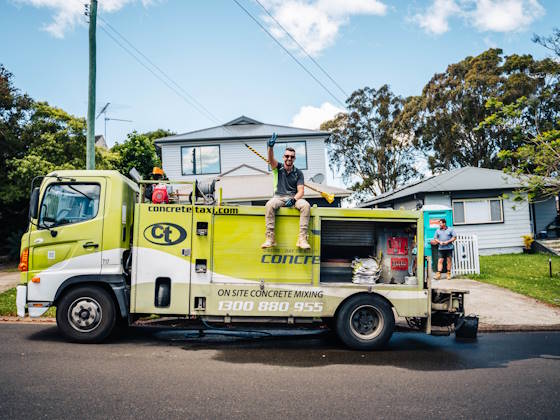
Avoiding concrete waste doesn’t have to be a headache. With Concrete Taxi, you can order exactly what you need, reduce unnecessary costs, and do your bit for the environment.
Use our Online Concrete Cost Calculator to plan your project today – and when you’re ready to go, contact us or give us a call. We’ll meet your needs, no matter the size of the job.

